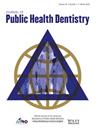The effect of water filter pitchers on the mineral concentration of tap water
Abstract
Objectives
To investigate the effect of water filter pitchers on the concentration of different minerals in tap water.
Methods
Nine water filter pitchers (A–I) were chosen based on consumer preferences and Amazon reviews. Each filter was tested for its ability to modify the concentrations of fluoride, calcium, magnesium, potassium, and sodium in tap water. Tap water samples were collected before and after filtration, at various intervals (1, 5, 10, 30, 50, 75, and 100 L) during filtration, and analyzed using an ion-specific electrode (fluoride) and atomic absorption spectrometry (other minerals). Statistical analyses were conducted to compare filtered and unfiltered water mineral concentrations.
Results
Water filter pitcher effect: Filters F (p < 0.001) and G (p = 0.030) decreased fluoride concentrations. All filters except I (p = 0.235) and H (p = 0.717) decreased calcium concentrations (p < 0.01). Filters E (p = 0.018), D (p = 0.014), and G (p = 0.010) decreased magnesium concentrations. Filters I (p = 0.028) and D (p = 0.009) increased potassium concentrations. Filter A (p = 0.002) increased sodium concentrations, while C (p = 0.034) decreased sodium concentrations. Effect of filter aging: All filters affected mineral concentrations over time but to varying extents. Filter G had the most pronounced effect on reducing mineral concentrations compared to all others. No filter was able to completely remove fluoride from tap water, contrary to the claims made by three manufacturers.
Conclusions
The present study highlighted that water filter pitchers vary greatly in their ability to affect mineral concentrations in tap water during their use. Further research is needed to develop more effective water treatment solutions.


 求助内容:
求助内容: 应助结果提醒方式:
应助结果提醒方式:


